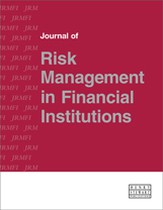General wrong-way risk and stress calibration of exposure
Abstract
A conceptually sound method of incorporating general wrong-way risk (WWR) into the asymptotic single risk factor (ASRF) framework that underlies Basel capital rules is shown in the first part of this paper. An algorithm is presented that converts the unconditional distribution of netting-set-level exposure generated by an arbitrary Monte Carlo simulation process to an exposure at default (EAD) measure that consistently incorporates general WWR under the ASRF framework. The conversion is done at a counterparty level via a simple closed-form function of a single parameter that controls the strength of general WWR. The second part of the paper analyses the Basel III requirement that, in addition to normal calibration, banks’ credit exposure models must be calibrated to a period of stress. Basel III justified the introduction of stress calibration by the need for capturing general WWR. However, it is argued that stress calibration of exposure does not address general WWR adequately. Simple examples are used to show that EADs obtained with stress calibration for a benign period will severely overstate not only the EAD seen in that benign period, but also the EAD seen in the stressed period.
The full article is available to subscribers to the journal.
Citation
Pykhtin, Michael (2012, June 1). General wrong-way risk and stress calibration of exposure. In the Journal of Risk Management in Financial Institutions, Volume 5, Issue 3. https://doi.org/10.69554/CBFI5371.Publications LLP
